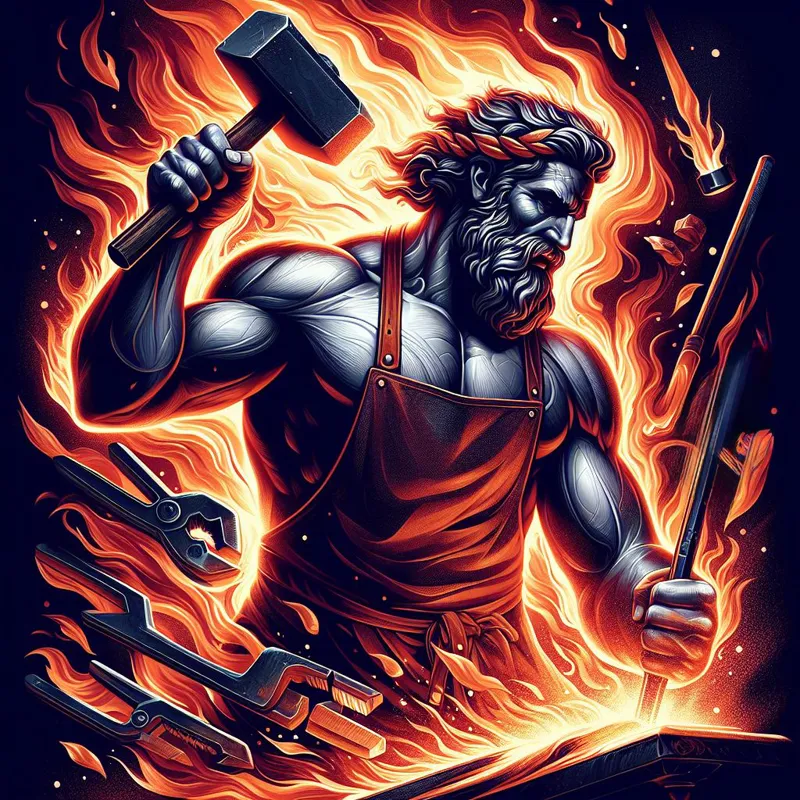
One who builds useful things
The carpenter, a figure often seen in the background, hammering away at wood or measuring lengths with a keen eye, holds a profound symbolic significance in many cultures. This symbolism is not just born from the profession itself, but from the values, skills, and materials that a carpenter interacts with. Through the lens of history, mythology, and cultural narratives, the role of the carpenter unfolds as an emblem of creation, transformation, and integrity.
Creation and Craftsmanship

The nature of time
The carpenter, as a creator, holds a significant place in the annals of craftsmanship. This role is not merely about converting wood into functional objects, but it's an artistic endeavor that brings visions to tangible reality. The carpenter's ability to see potential in raw material and transform it into something both useful and beautiful is akin to an artist bringing a canvas to life. This process involves a deep understanding of the material, an innate skill in manipulating it, and a creative vision that goes beyond mere functionality.
Moreover, carpentry as a craft represents the human desire and ability to shape our environment. This craftsmanship is marked by an attention to detail, a profound understanding of materials, and a commitment to creating works that are not only structurally sound but also aesthetically pleasing. These qualities elevate the carpenter's work from mere construction to an art form, reflecting a deep-seated human trait of wanting to create and beautify our surroundings.
Stability and Reliability

Built upon the ruins
Carpenters are emblematic of stability and reliability, traits deeply rooted in their trade. The structures they create, from homes to furniture, are expected to stand the test of time, embodying physical endurance and reliability. This expectation mirrors the societal perception of carpenters as individuals characterized by dependability and steadfastness. Their work, often unseen once completed, forms the backbone of daily life, offering stability and security.

Upward and upward
This symbolic reliability extends beyond their physical creations to the personal virtues they represent. Carpenters are often portrayed as individuals of strong character, embodying honesty, hard work, and dependability. These qualities are not only respected in the realm of their profession but are also regarded as exemplary traits to aspire to in general life. The carpenter, in this sense, becomes a symbol of moral integrity and a beacon of steadfastness in a constantly changing world.
The Carpenter and Nature

Adaptation
The relationship between carpenters and nature is unique and profound. Carpenters work in harmony with their primary material, wood, creating a bond that symbolizes the human connection with the natural world. This relationship is based on respect and understanding, as the carpenter must know the characteristics of different woods to effectively work with them. This deep connection with nature underscores a broader theme of how humans interact with, use, and are dependent on natural resources.

Who could imagine?
In various cultures, this relationship is seen through different lenses. In some, the carpenter is viewed as a steward of the forest, responsible for balancing their needs with the sustainability of their environment. In others, the carpenter is seen as a mediator between the natural world and the human-made one, showcasing how nature can be transformed in a respectful and sustainable manner. This aspect of carpentry emphasizes the importance of sustainable practices and the respectful use of natural resources.
Transformation and Adaptation

Consistency
The theme of transformation and adaptation is central to the symbol of the carpenter. Carpenters are not just builders; they are innovators who adapt materials to suit specific needs and contexts. This ability to transform wood into a myriad of forms mirrors the human capacity for adaptation and innovation. It's a reflection of our ability to see potential in the raw and to reshape it to meet evolving needs and challenges.

What stabilizes the table?

Why should the table be stable?
Carpenters have historically played a crucial role in societal transformations. Their skills have been pivotal in the construction of structures ranging from ancient temples to modern skyscrapers, showcasing an adaptability that spans centuries. This adaptability is not merely physical; it symbolizes the resilience and evolutionary spirit of humanity, our ability to respond to changing times with ingenuity and creativity.

Culture
Mythology and Religion

Guides our hands
In mythology and religion, the carpenter often emerges as a figure of great significance. This theme explores how carpenters are depicted in various mythological and religious narratives, often being attributed with divine or near-divine status. Their ability to create and shape the physical world is seen as a reflection of higher powers, linking carpentry with creation myths and divine acts. This portrayal elevates the carpenter from a mere artisan to a symbol of divine creativity and power.

The most important job
For instance, in Christian tradition, the portrayal of Jesus as the son of a carpenter imbues his character with a sense of humility and connection to the common man. In other cultures, carpenters are seen as the creators of gods' abodes or magical artifacts, further elevating their status to that of beings endowed with significant skill and spiritual importance. These narratives underscore the revered status of carpenters, linking their craft with the sacred and the profound.

Moving faster and faster
The Carpenter as a Cultural Icon

Fixing a leaky pipe
The carpenter has long stood as a cultural icon, representing various ideals across different societies. This image of the carpenter, often depicted in art and literature, symbolizes industriousness, creativity, and the dignity of labor. The carpenter, through their skill and dedication, is seen as a representative of the working class, embodying the strength and skill inherent in manual labor.

System back online
This cultural representation has evolved over time, especially with the advent of industrialization and modern technology. The essence of the carpenter's image, however, remains constant: a symbol of precision, skill, and hard work. This enduring image speaks to the respect and admiration for the trade and the timeless values it represents, transcending changes in tools and techniques.
Legacy and Heritage

The ship we're all on
The legacy and heritage of carpentry form an essential part of its symbolic representation. This theme delves into how the knowledge and skills of carpentry have been passed down through generations, embodying a rich heritage of craftsmanship. The continuity of this tradition showcases not only the transmission of skills but also the perpetuation of cultural values and artistic expressions inherent in carpentry.

The captain
Carpentry, as a trade, has often been a family legacy, with skills and secrets passed from one generation to the next. This transmission of knowledge is not just about the technical aspects of working with wood but also involves imparting the values of patience, precision, and respect for the craft. The legacy of carpentry is thus a tapestry of stories, techniques, and cultural nuances that have evolved over time, adapting to the changes in society while maintaining the core essence of the craft.

The worship of sacrifice
Moreover, the heritage of carpentry is reflected in the historical structures and artifacts that have stood the test of time, serving as tangible links to the past. These creations are not just physical remnants but are imbued with the stories, styles, and societal contexts of their times. They offer insights into the evolution of carpentry techniques, the cultural significance of woodwork in different eras, and the artistic expressions of carpenters throughout history. This aspect of carpentry underscores the importance of preserving these skills and creations, not just as a nod to the past but as a vital part of cultural identity and historical continuity.
The carpenter, as explored through these themes, emerges as a multifaceted symbol. From a creator of tangible objects to a figure embodying stability, a harmonizer with nature, an agent of transformation, a mythological icon, and a cultural emblem, the carpenter's symbolism is rich and varied. This exploration not only provides insights into the profession but also reflects broader human values and our interconnectedness with history, culture, and the environment. The carpenter's symbol, therefore, is a powerful testament to human ingenuity, resilience, and our enduring relationship with the material world.

















